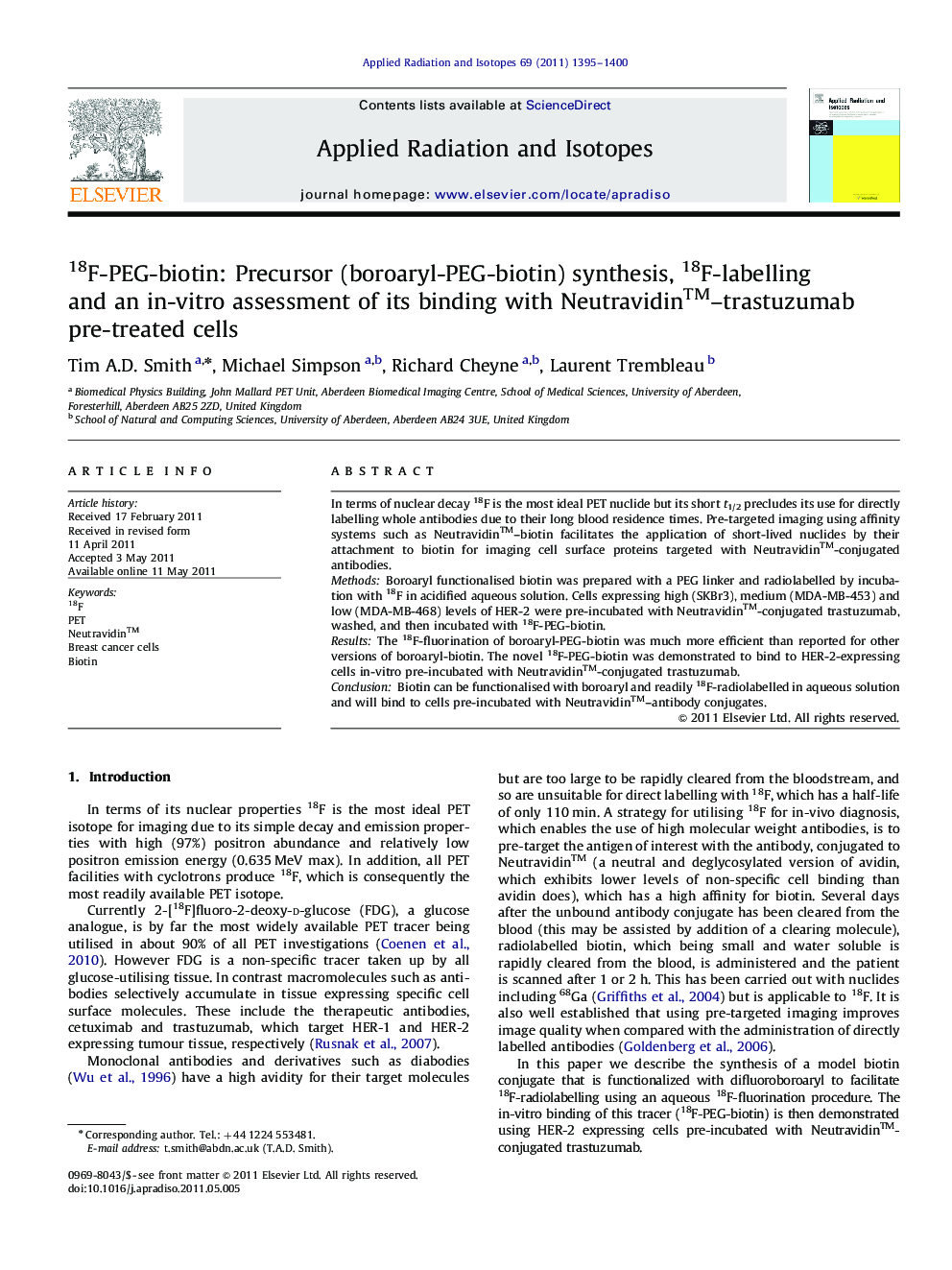| Article ID | Journal | Published Year | Pages | File Type |
|---|---|---|---|---|
| 1876434 | Applied Radiation and Isotopes | 2011 | 6 Pages |
In terms of nuclear decay 18F is the most ideal PET nuclide but its short t1/2 precludes its use for directly labelling whole antibodies due to their long blood residence times. Pre-targeted imaging using affinity systems such as Neutravidin™–biotin facilitates the application of short-lived nuclides by their attachment to biotin for imaging cell surface proteins targeted with Neutravidin™-conjugated antibodies.MethodsBoroaryl functionalised biotin was prepared with a PEG linker and radiolabelled by incubation with 18F in acidified aqueous solution. Cells expressing high (SKBr3), medium (MDA-MB-453) and low (MDA-MB-468) levels of HER-2 were pre-incubated with Neutravidin™-conjugated trastuzumab, washed, and then incubated with 18F-PEG-biotin.ResultsThe 18F-fluorination of boroaryl-PEG-biotin was much more efficient than reported for other versions of boroaryl-biotin. The novel 18F-PEG-biotin was demonstrated to bind to HER-2-expressing cells in-vitro pre-incubated with Neutravidin™-conjugated trastuzumab.ConclusionBiotin can be functionalised with boroaryl and readily 18F-radiolabelled in aqueous solution and will bind to cells pre-incubated with Neutravidin™–antibody conjugates.
► Boroaryl-biotin precursor is prepared. ► Rapid 18F-fluorination is demonstrated. ► HER-2 expressing breast cancer cells pre-treated with trastuzumab–Neutravidin™. ► 18F-PEG-biotin binding to pre-treated cells corresponds with HER-2 expression.
